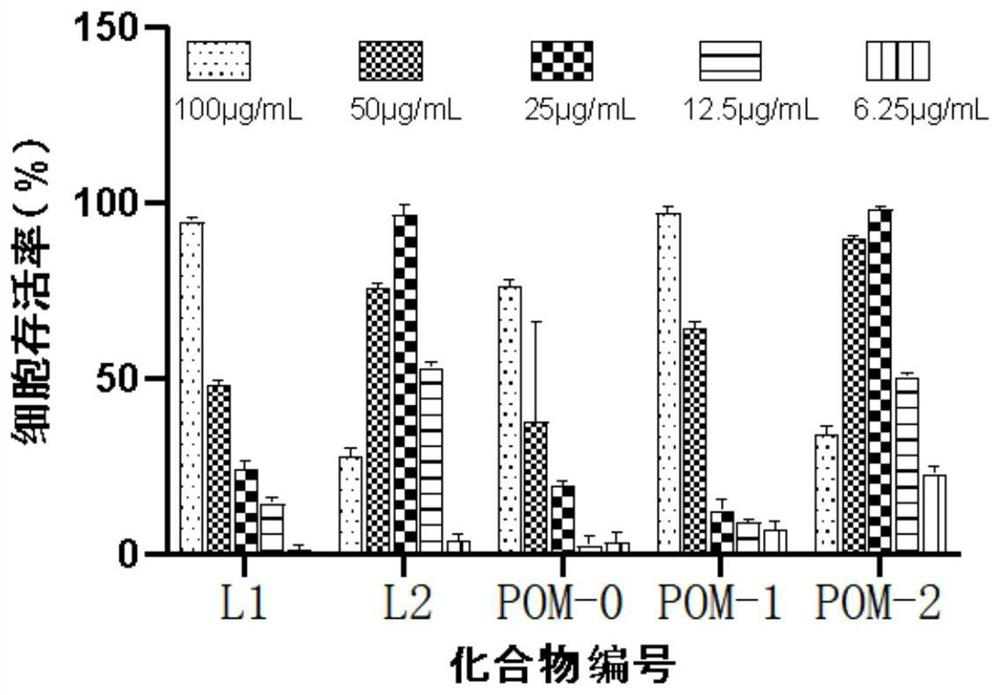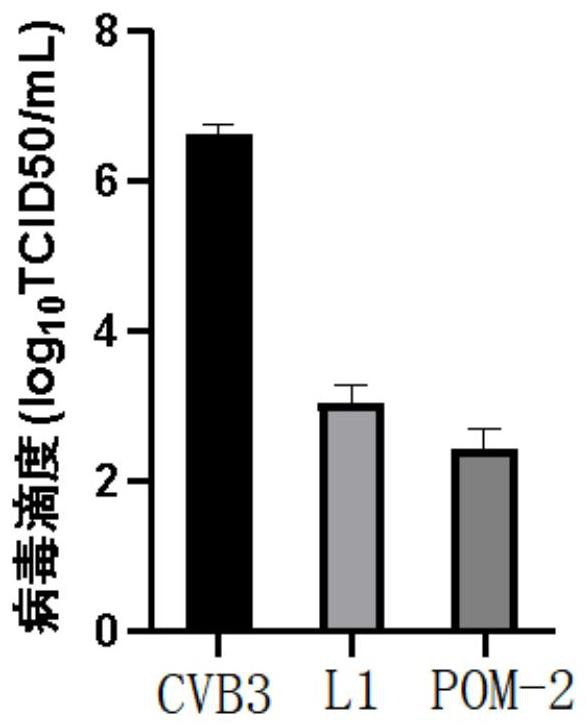Application of iodo-hydrazide and iodo-hydrazide polyacid derivative in preparation of anti-CVB3 virus drugs
An iodohydrazide and acid derivative technology, applied in the field of biomedicine, can solve problems such as remote practical application, and achieve the effects of inhibiting cytopathic effect, enhancing survival rate, and promising clinical application.
- Summary
- Abstract
- Description
- Claims
- Application Information
AI Technical Summary
Problems solved by technology
Method used
Image
Examples
Embodiment 1
[0030] Example 1, Detection of Iodohydrazide and Iodohydrazide Polyacid Derivatives Inhibiting CVB3 Antiviral Activity
[0031] 1. Test content:
[0032] Anti-CVB3 activity analysis of compounds: In this invention, the anti-CVB3 activity of a series of iodohydrazides and iodohydrazide polyacid derivatives with new structures will be evaluated by combining cytopathic effect analysis and MTT determination of cell survival rate detection methods.
[0033] 2. Test method:
[0034] 2.1 Toxicity of compounds to host Hep-2 cells
[0035] Hep-2 cells were plated in 96-well plates at 37°C, 5% CO 2 After the monolayer was grown in the incubator, the cell culture solution was discarded, and the cell maintenance solution containing different concentrations of the test compound was added to continue the culture. After 48 hours, the cytotoxicity was visually observed under the microscope and recorded respectively, and the cell survival rate was determined by the MTT method. SPSS 11.5 sof...
Embodiment 2
[0047] Embodiment 2, the inhibitory action test of compound to CVB3 progeny virus output
[0048] 1. Test content
[0049] After CVB3 infected Hep-2 cells, the inhibitory effect of compound L2 and POM-2 on the production of CVB3 progeny virus was detected.
[0050] 2. Test method
[0051] Hep-2 cells in the logarithmic growth phase were plated on 24-well plates, and the cells were infected with 100TCID50 CVB3 after the monolayer was overgrown. After incubation at 37°C for 1.5h, the virus solution was removed, washed with PBS three times, and the solution containing 25μg / mL L2 and POM-2 was added. Cell maintenance fluid. After 48 hours, the cells and supernatant culture fluid were collected, and after freezing and thawing three times at -20°C and 37°C, the titer of CVB3 virus was determined by the TCID50 method.
[0052] 3. Test results
[0053] Such as image 3 As shown, compared with the virus control group, the Hep-2 cells treated with 25 μg / mL L2 and POM-2 had signific...
PUM
 Login to View More
Login to View More Abstract
Description
Claims
Application Information
 Login to View More
Login to View More - R&D
- Intellectual Property
- Life Sciences
- Materials
- Tech Scout
- Unparalleled Data Quality
- Higher Quality Content
- 60% Fewer Hallucinations
Browse by: Latest US Patents, China's latest patents, Technical Efficacy Thesaurus, Application Domain, Technology Topic, Popular Technical Reports.
© 2025 PatSnap. All rights reserved.Legal|Privacy policy|Modern Slavery Act Transparency Statement|Sitemap|About US| Contact US: help@patsnap.com



